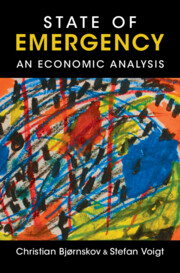Book contents
- State of Emergency
- State of Emergency
- Copyright page
- Contents
- Figures
- Tables
- Acknowledgments
- 1 Introduction
- 2 The Architecture of Emergency Constitutions
- 3 The Determinants of Emergency Constitutions
- 4 Why Do Governments Call a State of Emergency?
- 5 The Effectiveness of Emergency Constitutions after Natural Disasters
- 6 When Does Terror Induce a State of Emergency? And What Are the Effects?
- 7 States of Emergency after Domestic Turmoil
- 8 Dealing with Disaster
- 9 Keeping up the Balance between the Federation and the States
- 10 Constitutionalized Media Freedom during Emergencies
- 11 Unconstitutional States of Emergency
- 12 The COVID-19 Pandemic, States of Emergency, and Reliance on Executive Decrees
- 13 Returning to the Status Quo Ante?
- 14 Contracting for Catastrophe
- 15 The Future of States of Emergency
- References
- Index
- References
References
Published online by Cambridge University Press: 01 November 2024
- State of Emergency
- State of Emergency
- Copyright page
- Contents
- Figures
- Tables
- Acknowledgments
- 1 Introduction
- 2 The Architecture of Emergency Constitutions
- 3 The Determinants of Emergency Constitutions
- 4 Why Do Governments Call a State of Emergency?
- 5 The Effectiveness of Emergency Constitutions after Natural Disasters
- 6 When Does Terror Induce a State of Emergency? And What Are the Effects?
- 7 States of Emergency after Domestic Turmoil
- 8 Dealing with Disaster
- 9 Keeping up the Balance between the Federation and the States
- 10 Constitutionalized Media Freedom during Emergencies
- 11 Unconstitutional States of Emergency
- 12 The COVID-19 Pandemic, States of Emergency, and Reliance on Executive Decrees
- 13 Returning to the Status Quo Ante?
- 14 Contracting for Catastrophe
- 15 The Future of States of Emergency
- References
- Index
- References
- Type
- Chapter
- Information
- State of EmergencyAn Economic Analysis, pp. 392 - 411Publisher: Cambridge University PressPrint publication year: 2024

